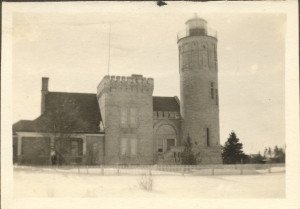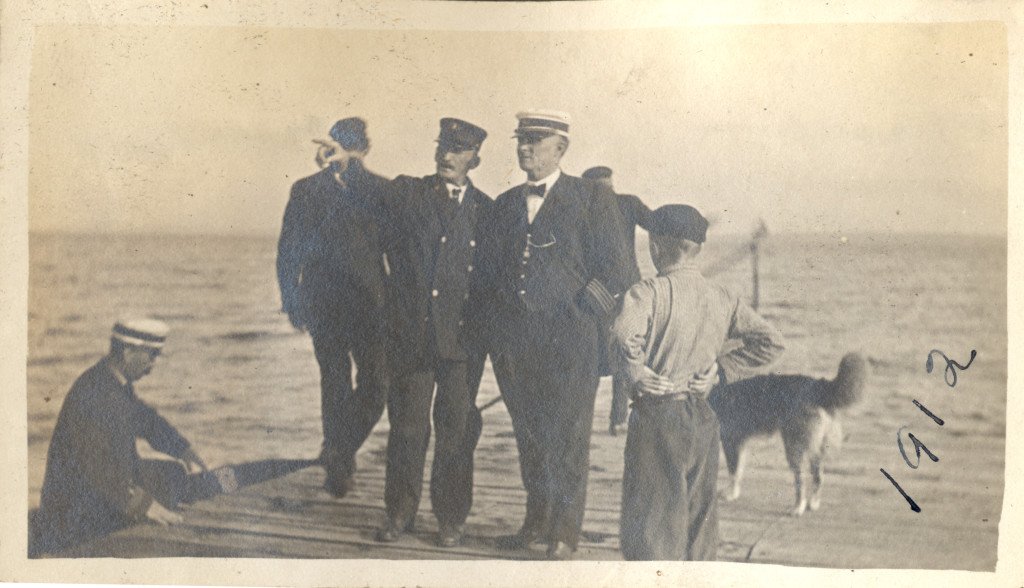Have you ever kept a journal or a diary? Looking back at what you’ve written can help you remember ideas, special events, and how you felt at a certain time. A century ago, the keepers at the Old Mackinac Point Lighthouse were required to keep a log of their daily activities, and while the logs don’t reveal the keepers’ emotions, they do tell us a great deal about what life was like at the station.
 According to the 1902 edition of the Instructions to Light-Keepers, the regulations of the U.S. Lighthouse Service, all stations were required to maintain a watch-book or journal. Keepers were instructed to record each day’s events on a line stretching across two pages, with the admonition that if the entries were “carefully written” only “one line will be found sufficient.” They were required to record any visits by lighthouse inspectors, the weather, and “any item of interest occurring in the vicinity.” Finally, every night the keeps also had to record whether any neighboring lighthouse or lighted buoys were visible.
According to the 1902 edition of the Instructions to Light-Keepers, the regulations of the U.S. Lighthouse Service, all stations were required to maintain a watch-book or journal. Keepers were instructed to record each day’s events on a line stretching across two pages, with the admonition that if the entries were “carefully written” only “one line will be found sufficient.” They were required to record any visits by lighthouse inspectors, the weather, and “any item of interest occurring in the vicinity.” Finally, every night the keeps also had to record whether any neighboring lighthouse or lighted buoys were visible.
A century ago, keeper George Marshall followed the Instructions to Light-Keepers exactly when he wrote in the Old Mackinac Point logbook. On Wednesday, December 15, 1915, for instance, he made the following entry, written across two pages of the logbook exactly as instructed: “Fresh NW [wind], clear, one Boat to day, overhauling stores.” The log for the rest of the month is similar, noting that a gale moved through the Straits of Mackinac on the 13th and 14th, sending boats to anchor to ride out the storm. Although only one freighter passed by Old Mackinac Point on the 15th, Marshall also recorded the passage of an increasing number of boats trying to make final trips through the straits before winter closed the shipping season. Besides these special events, he recorded routine duties like “overhauling stores” on the 15th, sounding the fog signal on the 23rd, and cleaning brass work on the 27th.
Today, the Old Mackinac Point logbooks create a fascinating look at life at the station from the time it opened in 1890 almost until the end of operations in 1957. Even on days like December 31, 1915, when Marshall wrote that there was “nothing of importance to day,” the logbooks help us better understand how the light station functioned in the past.










